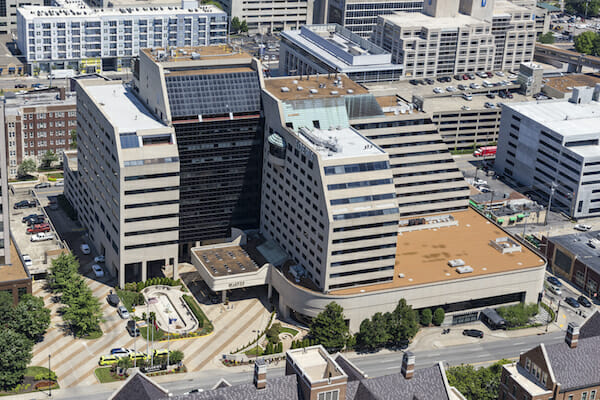As a building owner or property manager, do you feel protected? With any roofing project, you need to be aware of the various concerns that could affect the success, cost, and timeline of your build. There are safety and liability concerns – and what about the roof and building itself? In this introductory piece, we’ll explore all the aspects of roof work that you need to consider so that you can manage the risk.
Safety for Individuals: Workers and Tenants
If you’re not a roofer, you may not think that worksite safety is your concern. But as a property owner or manager, not only must you care about the wellbeing of workers and tenants in your building, you could also be liable for problems such as injuries that occur on the premises.
When it comes to roofs specifically, there are three major safety hazards that you should be aware of:
[fall-protection]
Since you likely won’t be up on the roof supervising the roofing contractor and his or her team, it’s imperative that you hire a trustworthy, experienced, and reliable contractor who takes safety seriously – and who proactively communicates with you about safety precautions and preventative measures. Don’t hesitate to have one or more discussion with your contractor about how he or she plans to circumvent these risks and prevent accidents.
Protection for Your Building: Prevention and Planning
Roofing can be a potentially dangerous job, but it’s not just the roofers who are at risk during roof work. The building itself is also at risk. The six biggest threats to buildings during roof work are:
- Water Infiltration: During the construction process, the roof is more susceptible to water infiltration, especially if preventative measures are faulty.
- Inclement Weather: Unexpected bad weather can derail roof work, from damaging materials and equipment to prolonging timelines.
- Fire Hazards: Some kinds of roofs, (e.g. torch-down systems) can present a fire hazard.
- Airborne Toxins: Some roofing materials, like the solvent-based adhesives used in fully-adhered systems, can give off noxious, hazardous toxins or fumes that can be drawn into the building.
- Falling Objects: Tools and other objects can fall from the roof. While this can be a hazard for workers and tenants, it can also cause damage to property.
- Construction Traffic: Congestion in and around the work site from trucks and heavy equipment can create hazards for people but can also lead to damage to the property.
You should discuss these risks with your contractor as part of the Job Hazard Analysis.
Risk Management: How Owners Can Foster a Safe Project From the Outset
Risk management starts during the project development phase when you or your representatives draw up the initial job. You should consider and discuss potential hazards, and how to communicate those hazards to bidders from the outset. Let the bidders know that you are serious about a safe workplace and their safety plan will be a factor in selecting the successful bidder.
The contractor who wins the bid should then reassess and and confirm those findings at pre-construction meetings before work begins. It is strongly recommended that you attend these meetings, not only to remain in the loop, but more importantly, to demonstrate your ongoing commitment to safety. Attendance in these meetings reinforces that you took common sense precautions and approached the project mindful of the risks and with the intention of carrying out a safe project. In the event of a safety issue, these preventative measures can help to protect you from liability.
Protected in the Contract: How Contractual Language Affects Liability
Ultimately, the owner of the property is liable for what happens on the property. Attending pre-construction meetings can help reduce that liability, but self-protection shouldn’t stop there. You should insist on contractual language that indemnifies you from legal responsibility. The contractor should insert that language into the contract, and then back that indemnity with insurance that protects you, as well as himself or herself.
Without this language, you may be legally liable for accidents and will almost certainly be named in any potential lawsuits that follow.
Non-Performance: Protect Yourself From Unscrupulous Workers or Businesses
Finally, there is the issue of non-performance. Sometimes, a contractor cannot or will not finish a project after work has begun. Sometimes they go out of business or go bankrupt. Other times, the owner passes away and leaves the company without leadership. No matter what the reason, unfinished work can render a building uninhabitable and create dramatic financial hardships. In some circumstances, the property owner can be liable for the Contractor’s failure to pay material suppliers and/or subcontractors, even though the Owner has already paid the Contractor!
To protect against non-performance issues, you and other decision makers should consider purchasing a performance and payment bond, which guarantees the completion of the project within specifications by an insurance or bonding company.
As with any construction job, roofing is inherently dangerous – and not just in terms of physical danger. Start by understanding the project from a variety of perspectives and your role and responsibility in protecting yourself, your building, and others. Most importantly, do your due diligence when hiring a contractor; it is probably the single most important decision you will make in this project. Choose a professional who is trustworthy, dependable, experienced, and above all, committed to safety.

